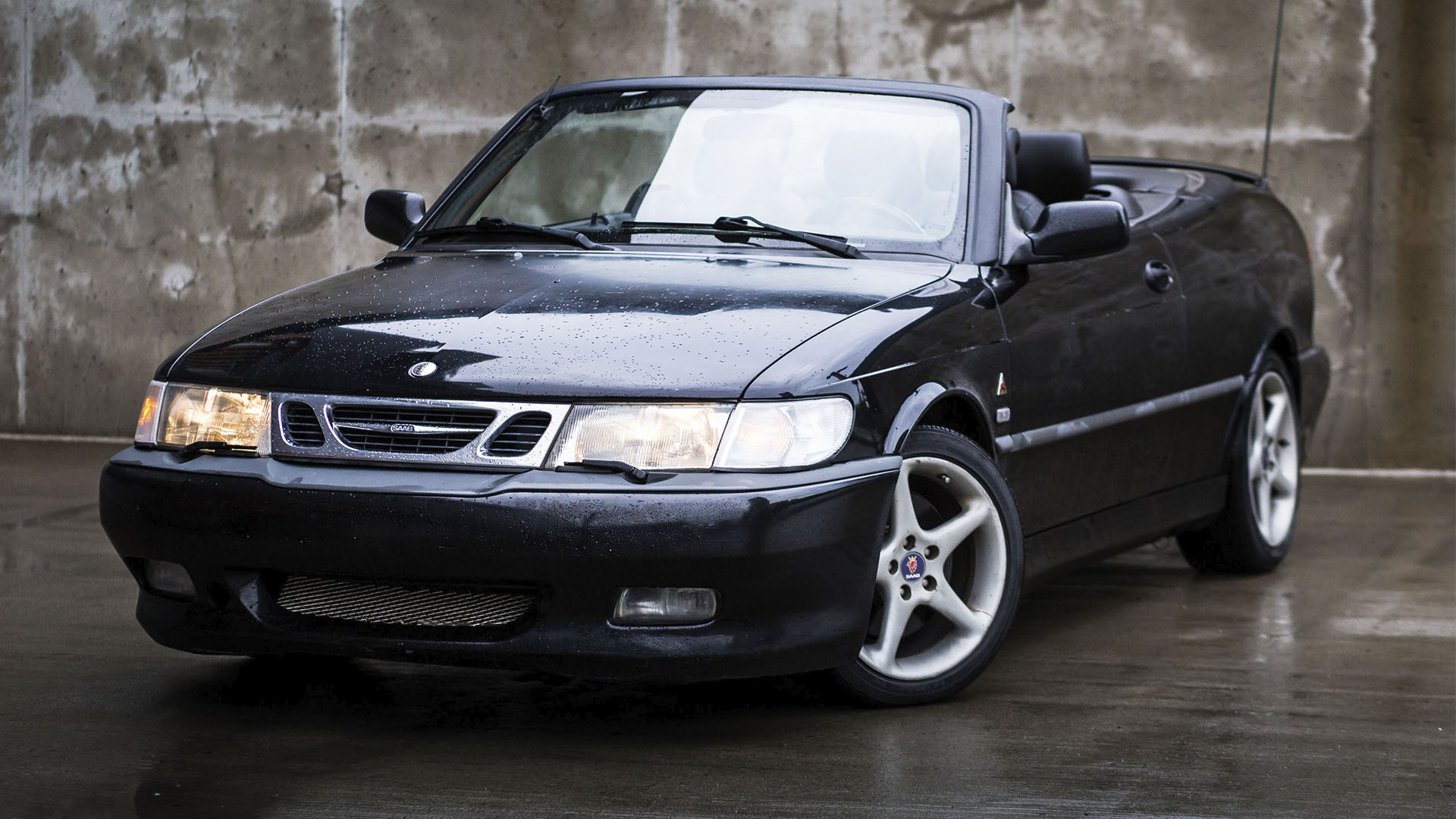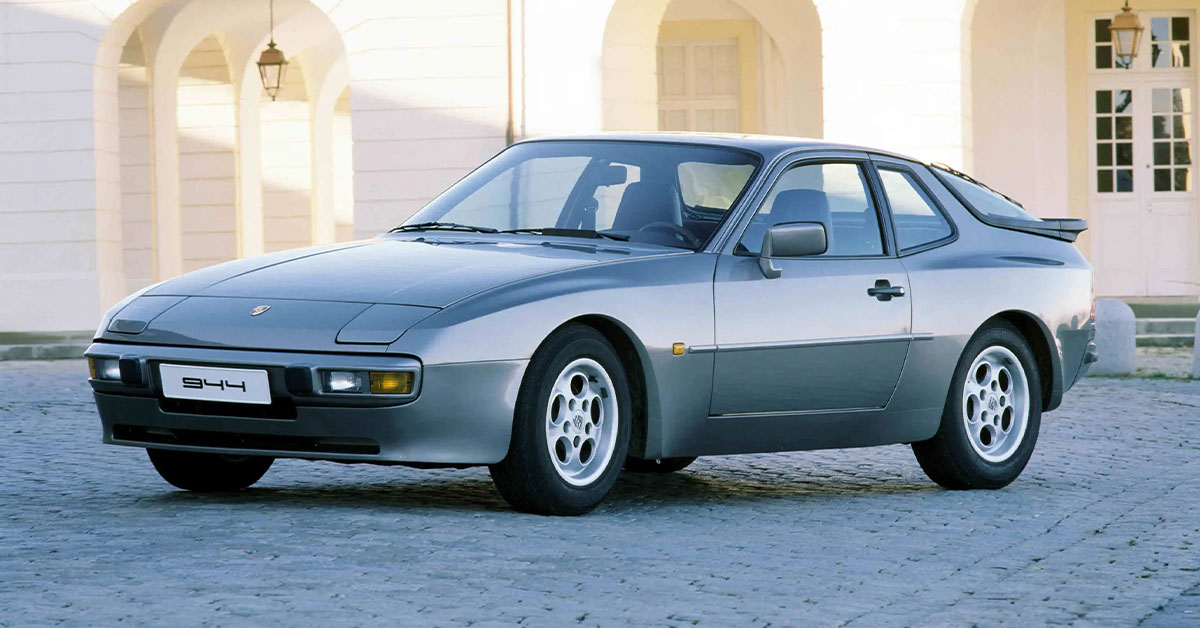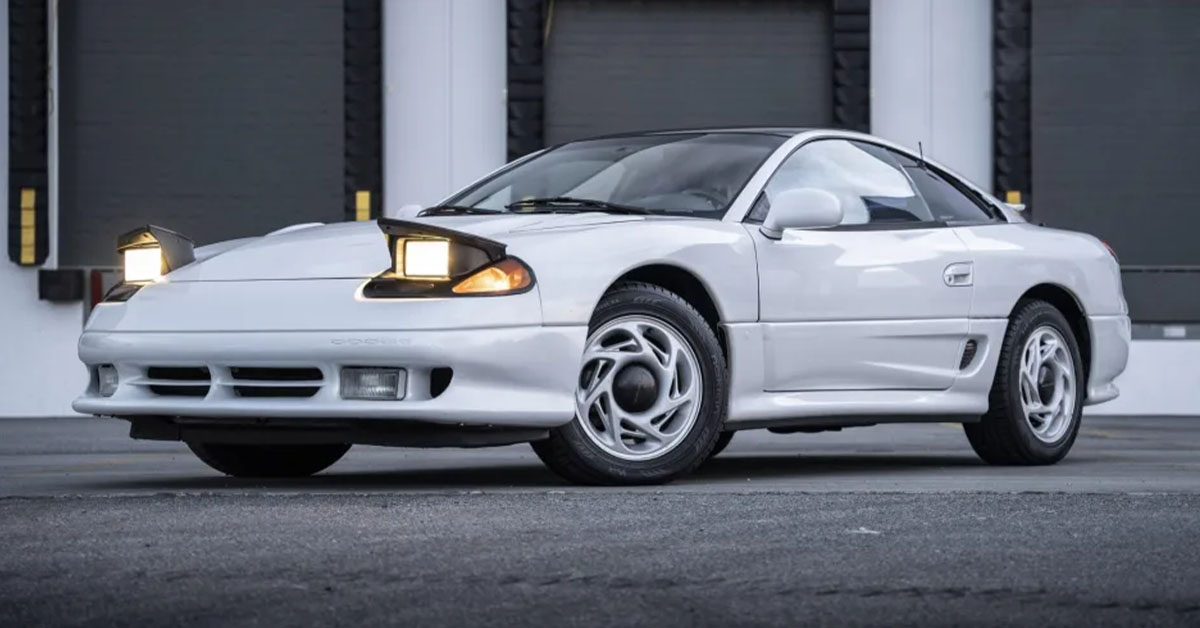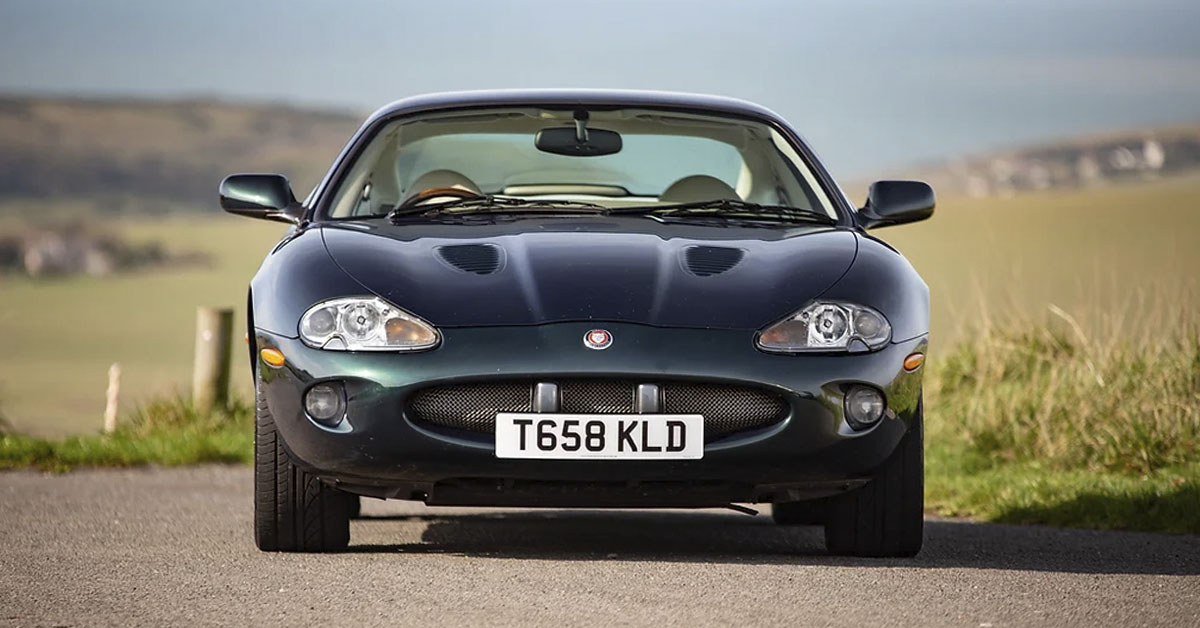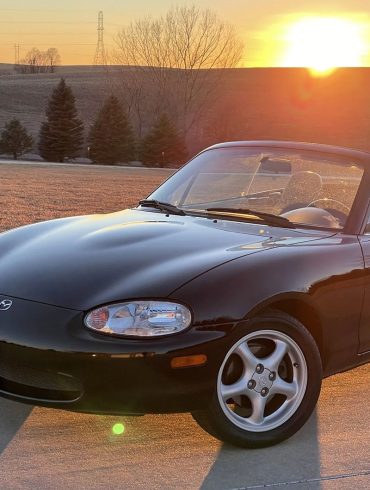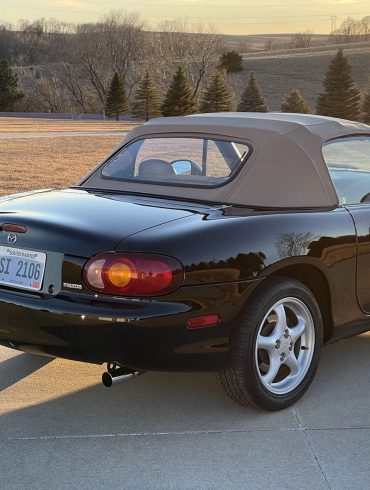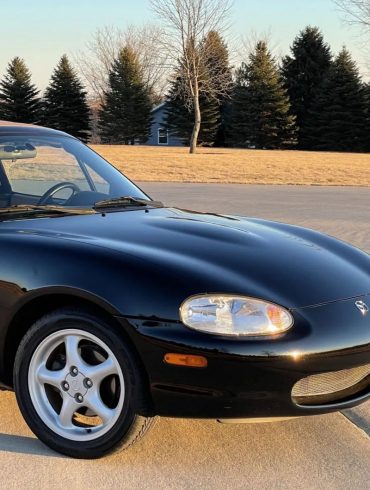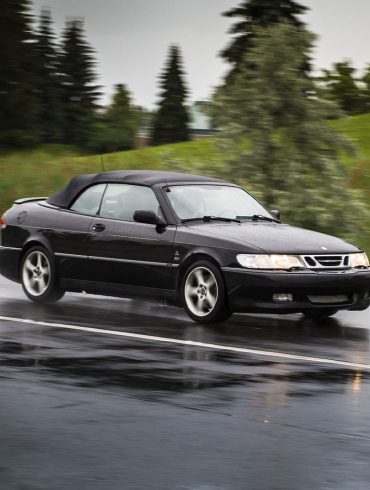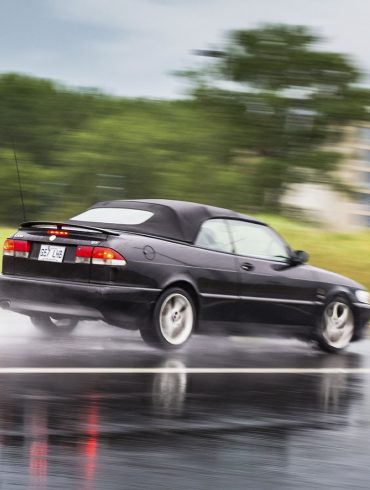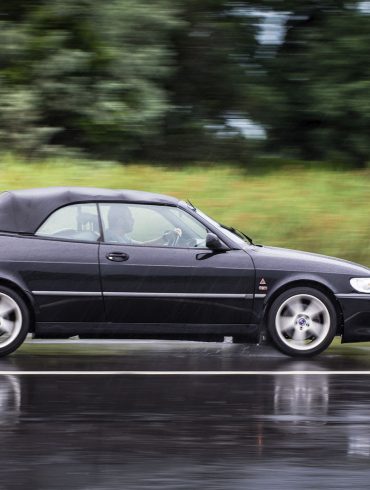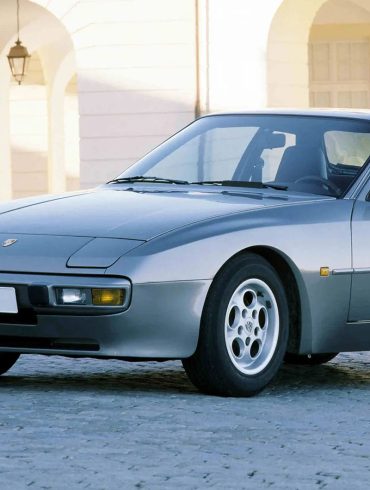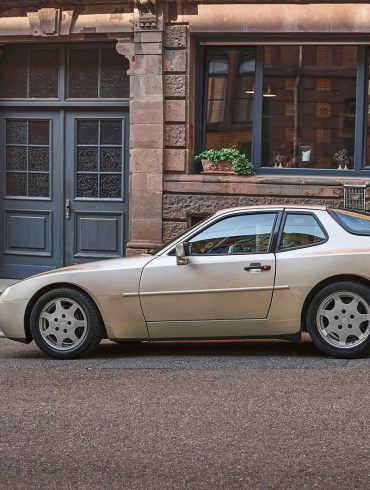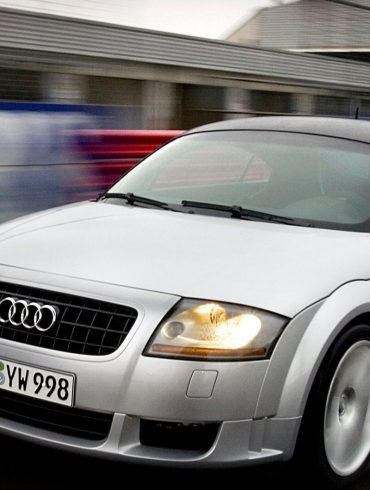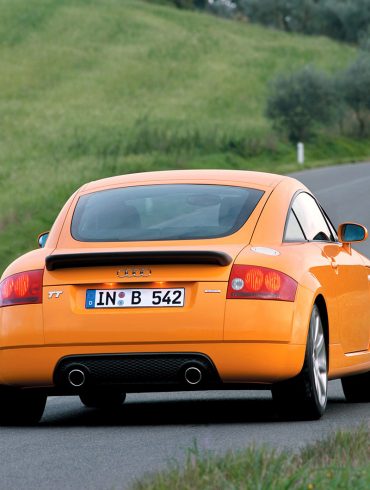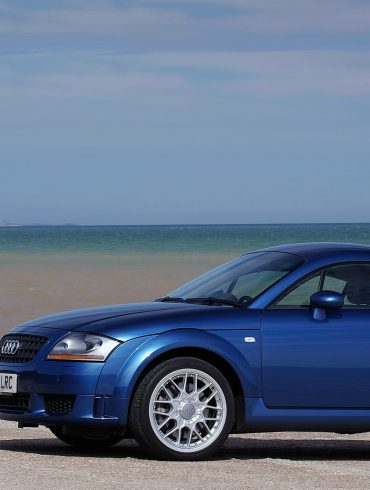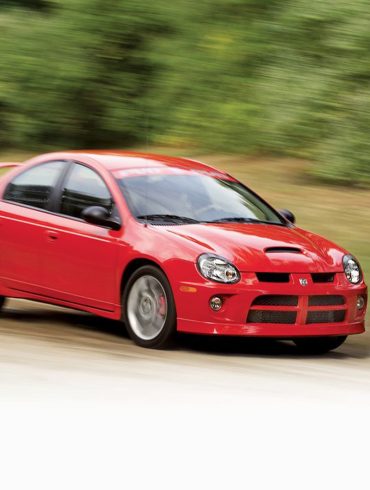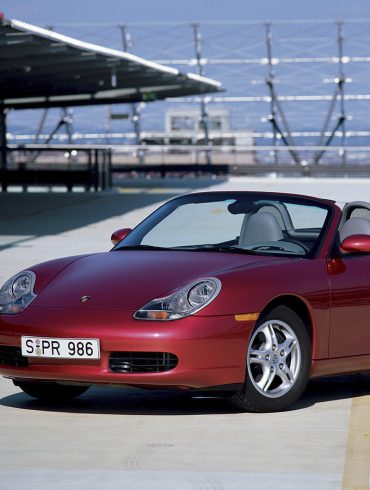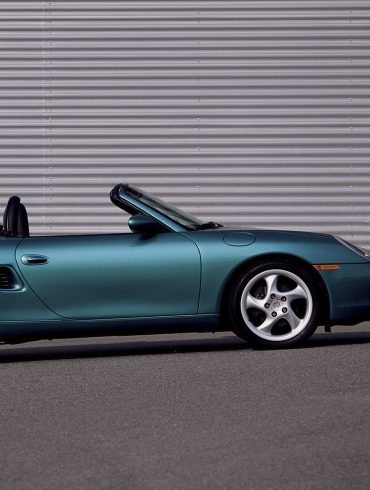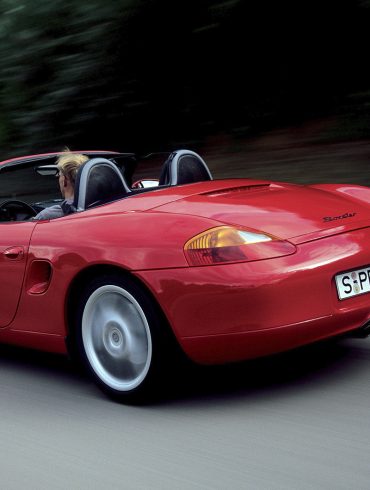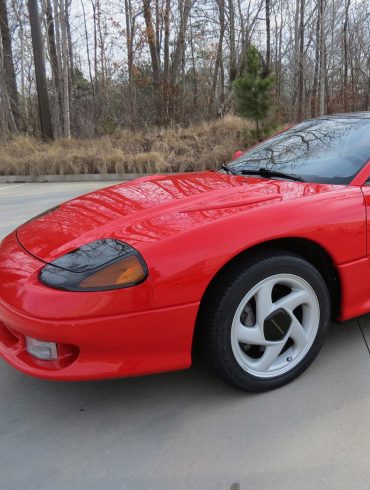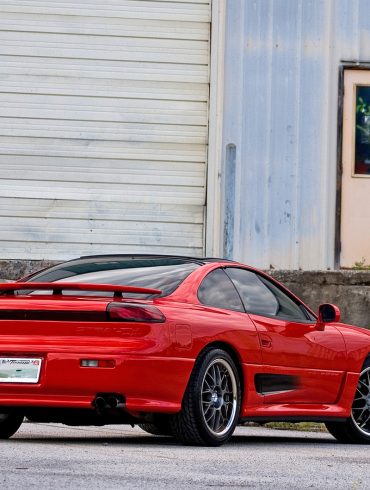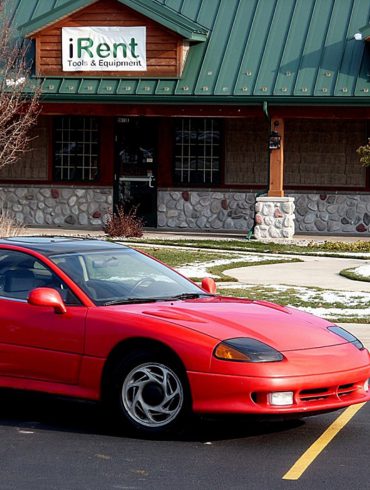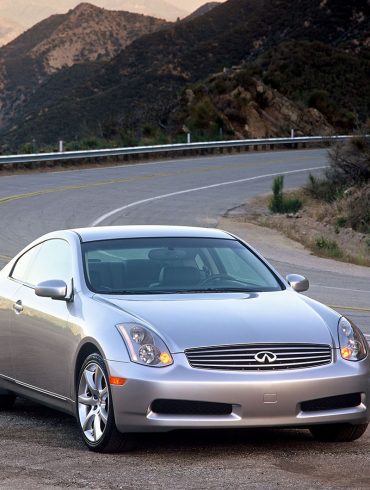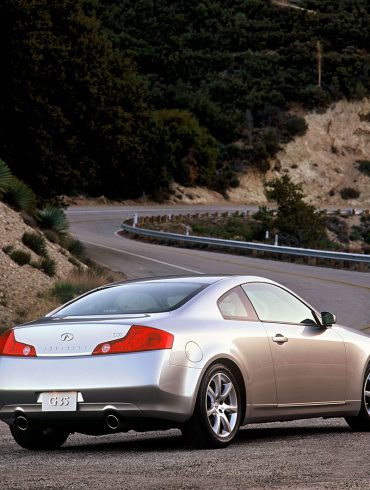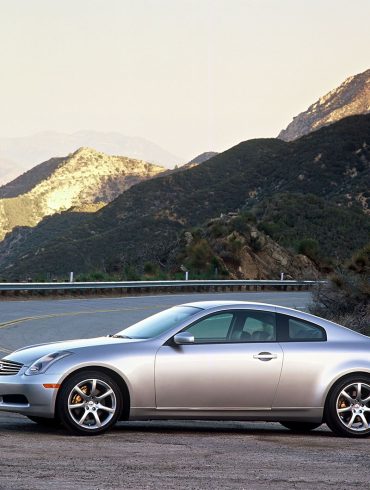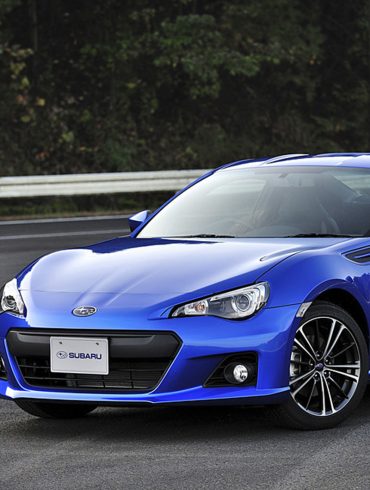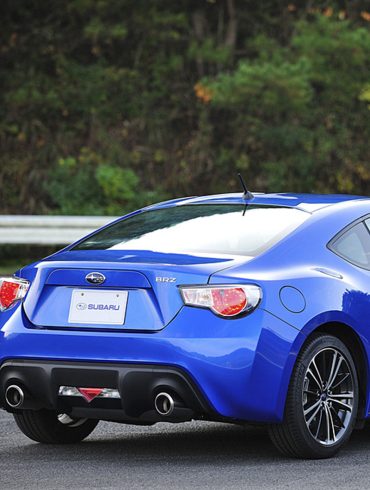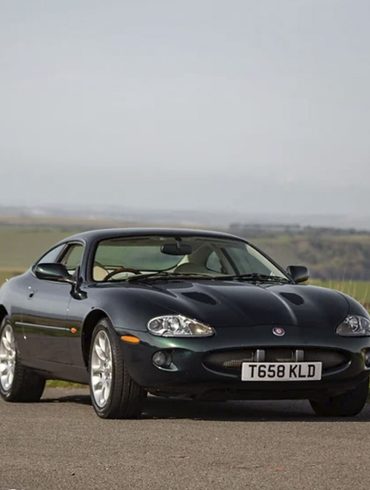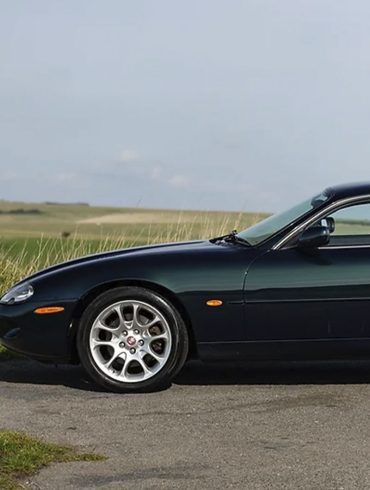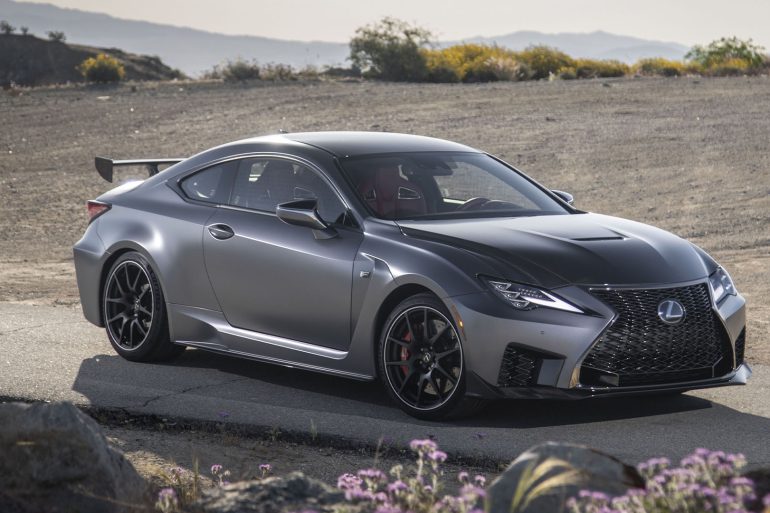About Our Selections
Nowadays, it's not rare to see sports cars that have doubled or tripled in value in a few years. Social media and YouTube have helped spread the word about which sports cars are hot, which contributes to prices becoming less accessible each year.
For instance, in 2020, you could still get your hands on a second-gen, unmodified Toyota MR2 Turbo for less than $10,000. Today, you will be lucky to see one in similar condition for less than $15,000.
However, there are still many legitimately exciting, high-performance models that, because they don't get the same enthusiast praise, are less sought-after and thus more affordable.
These sports cars under $10K not only pack a punch, but some can give the more "cool" and expensive cars a run for their money.
The Most Notable & Desirable Sports Cars Under $10k
We've picked these cars for their performance, design appeal, and, in some cases, rarity.
Mazda MX-5 Miata
The best-selling roadster in the world
What Makes It Special
The second-gen Mazda MX-5, produced from 1998 to 2005, with its iconic design and thrilling driving dynamics, continues to capture the essence of pure driving pleasure.
The MX-5's second iteration retained the classic roadster charm of its predecessor while embracing a more muscular and refined appearance. The flowing lines and compact dimensions exude timeless appeal, making it an instant classic.
Equipped with a lightweight and responsive chassis, the MX-5 delivered a "purist" driving experience by incorporating essential enthusiast elements like rear-wheel drive, two seats, and a manual gearbox.
Powertrain options included a 1.6-liter inline-four producing 110 hp and a 1.8-liter variant generating 140 hp. Both engines relied on a smooth-shifting five-speed manual transmission. Depending on the model and engine configuration, the 1.8-liter MX-5 could sprint from 0 to 60 mph in approximately 7.5 seconds and reach a top speed between 120 and 130 mph.
The second-gen MX-5 is the best-selling roadster in the world thanks to its affordable pricing, reliable mechanics, and open-top motoring experience, making it a cherished road icon.
Engine & Drivetrain Specifications
Engine: 1.8L DOHC 16-valve Inline-Four
Power: 138 hp
Torque: 119 ft-lbs @ 4,500 rpm
Transmission: 5-speed manual
Accomplishments, History, & Racing Achievements
The MX-5 has a track record in challenging endurance races, including the 24 Hours of Nürburgring and the demanding 25 Hours of Thunderhill. These races have showcased the MX-5's durability in withstanding the demands of prolonged high-speed racing.
In 2000, the MX-5 won the SCCA Pro Racing World Challenge GT Lite class championship. It also snagged the British GT Championship in 2001.
Resources & Owner's Communities
Saab 9-3 Viggen
An aircraft-derived FWD beauty
What Makes It Special
The 9-3 Viggen is a quirky Swedish sports car manufactured between 1999 and 2002. This car perfectly showcases Saab's dedication to pushing the boundaries of performance and innovation. Saab's 9-3 Viggen name derives from the word "thunderbolt," while the car's distinctive aerodynamic styling and aviation-inspired details pay homage to Saab's legacy as an aerospace manufacturer.
The heart of the 9-3 Viggen is a peppy turbocharged 2.3-liter inline-four engine that pumps 230 horses and 252 lb-ft of torque. This powertrain enables the Viggen to sprint from 0 to 60 mph in 6.4 seconds. The 9-3 Viggen has a sport-tuned suspension, upgraded brakes, and a limited-slip differential. These components, along with its front-wheel drive, enhance the car's agility, precision, and stability for those who like spirited driving.
Saab's commitment to safety is evident in the Viggen. In fact, its cutting-edge safety features earned the car outstanding ratings in crash tests and established it as one of the safest in its category.
Finding a roadworthy Viggen is becoming less common because of its limited production and Saab's discontinuation in 2011. However, its scarcity only adds to its allure, especially among Saab fans.
Engine & Drivetrain Specifications
Engine: 2.3 L DOHC Inline-Four
Power: 230 hp
Torque: 258 ft-lbs @ 2,500rpm
Transmission: 5-speed manual
Accomplishments, History, & Racing Achievements
In 2000, the Saab 9-3 Viggen had a decent role in the ETCC championship by finishing third.
Also in 2000, Per Eklund, a former Saab factory driver won The Pikes Peak International Hill Climb (PPIHC), also known as The Race to the Clouds in Saab 9-3 Viggen.
Resources & Owner's Communities
Porsche 944
An underappreciated "pure" Porsche
What Makes It Special
In the early 1980s, Porsche purists began griping about the 924, the company's flagship grand tourer V8, and its four-cylinder, Audi-derived engine's lack of distinction and power. For this reason, Porsche engineers went back to the drawing board.
Then, in the 1982 model year, Porsche introduced a new model to fill the gap between the 924 and the 911 SC regarding price and power. The result was the 944. Although the 944's bodywork resembled that of the 924, it underwent an exhaustive redesign, resulting in a more muscular appearance.
Additionally, using Mitsubishi's balancing shaft design, Porsche created a 2.5-liter inline four-cylinder engine for the 944. Thus, in the brand fans' eyes, the 944 was a "real" Porsche.
The 944's 2.5-liter engine initially generated 163 hp, while the variant with a catalytic converter from 1986 reached 150 hp. By 1988, the catalyzed engine had become compatible with super unleaded gasoline, bringing output up to 160 hp. For the last model year (1989), displacement increased to 2.7 liters and power to 163 horses.
Around a racetrack, the 944 Turbo was about as quick as the modern 911 Turbo. Still, driving was much nicer because of the 944's incredible balance and handling characteristics, making it zippier and more tossable.
Engine & Drivetrain Specifications
Engine: 2.5L Inline-Four
Power: 163 hp
Torque: 142 ft-lbs @ 3,000 rpm
Transmission: 5-speed manual
Accomplishments, History, & Racing Achievements
The Porsche 944 has a respectable track record in motorsports in championships like the IMSA Firestone Firehawk Series in the United States against homologated sports cars. The 944 also proved its endurance and engineering feats with a decent performance in the grueling 24 Hours of Nürburgring.
The Porsche 944 also had successful runs in the SCCA Trans Am Series and the British Touring Car Championship (BTCC). However, it's worth noting that although the 944 was a compelling racer, it was never as widely recognized or accomplished as some of its Porsche siblings, like the iconic 911.
Resources & Owner's Communities
The Best Performing Sports Cars Under 10k
While putting our list together, we found several sports cars that offer impressive performance for the money.
Audi TT quattro
An effortless sports car for the working man
What Makes It Special
The TT hit the market in 1998, but its development began in California four years earlier. It was introduced as a prototype in 1995, causing great admiration, and its development continued until it officially went into production in September 1998.
The Audi Tourist Trophy, thus the abbreviation TT, would rival German models such as the Mercedes SLK, the BMW Z3 (later the BMW Z4), and the Porsche Cayman and Boxster.
The TT significantly impacted the industry because of its Bauhaus-inspired design. It was a compact, efficient, and luxurious GT car that broke the mold of the automobile industry at the time.
It earned several awards for its styling and performance, especially the 225-hp quattro version—a 3.2 VR6 would be the unicorn TT, but good luck finding one under ten grand.
Early on, the first-gen's only engine option was a gasoline 1.8-turbo four-cylinder block with FWD, making 150 hp paired with a five-speed manual gearbox. The same engine was used in the quattro (all-wheel-drive) variant, pumping out 225 hp thanks to a bigger turbo and mated to a six-speed manual transmission.
Engine & Drivetrain Specifications
Engine: 1.8L DOHC 20v Inline-Four
Power: 225 hp
Torque: 206 ft-lbs @ 2,200 rpm
Transmission: 5 and 6-speed manual
Accomplishments, History, & Racing Achievements
In 2000, Audi debuted in the Deutsche Tourenwagen Masters (DTM) by introducing a heavily modified racing version of the TT called the TT R. The performance of the TT R was remarkable, allowing Laurent Aiello to win the drivers championship that year and Audi to secure the manufacturers' title.
The Audi TT 1.8 quattro actively participated and excelled thanks to its all-wheel-drive system and agile handling in the Nürburgring 24 Hours race, famous for its challenging track and demanding conditions.
Resources & Owner's Communities
Neon SRT-4
A modern classic?
What Makes It Special
The 2003 Neon SRT-4 was lower, with a new front fascia, hood scoop, larger wheels, a new rear bumper, and a good-sized spoiler. All these cosmetic features made it easy to tell that it was far from the family compact everyone knew.
The Dodge Neon SRT-4 relied on the same 2.4-liter four-cylinder block from the Chrysler PT Cruiser and Dodge Stratus, but with a Mitsubishi-sourced turbo that could deliver between 11 and 14 psi.
With this and several other modifications, the car pumped out 215 hp and 245 lb-ft of torque. The engine was paired with a five-speed manual transmission that sent power to the front axle to rip to 60 mph in 5.6 seconds.
We will remember the Neon SRT-4 as the American car that tried to catch up with the Subaru Impreza WRX or the Mitsubishi Lancer Evo. Although the SRT-4 attracted much attention and made a name for itself, it fell short, and its presence became ephemeral.
But its power and handling capabilities, which could battle Japanese and considerably more expensive and advanced cars, gave the Dodge Neon SRT-4 a place in our hearts.
Engine & Drivetrain Specifications
Engine: 2.4L DOHC 16v Turbocharged Inline-Four
Power: 215 hp
Torque: 245 ft-lbs @ 3,200 rpm
Transmission: 5-speed manual
Accomplishments, History, & Racing Achievements
The SRT 4 Neon gained much popularity among racing enthusiasts in grassroots racing and amateur motorsports. In classes and autocross competitions, numerous owners took part in SCCA events, where the car's agile maneuverability and turbocharged engine made it a strong contender.
Moreover, the SRT 4 Neon left its mark on the World Challenge racing series, which showcased sports cars based on production models competing on demanding road circuits.
Resources & Owner's Communities
Porsche Boxster
A true Porsche within reach
What Makes It Special
It's well-known within the automotive industry that the first-gen Boxster saved Porsche. In the early 1990s, Porsche was on the verge of bankruptcy as its lineup was outdated and sales were low. To restore the brand's prestige, they decided to create a new sports car that was small, light, and accessible to accompany the brand's flagship, the 911. The result was the 1997 Porsche Boxster, codenamed 986.
The Porsche Boxster set a new standard for power and safety in the convertible sports car market segment. This roadster combined the dynamic driving qualities of a sports car with total utility aptitude.
And although it doesn't get the same praise from enthusiasts as other Porsche models, the Boxster is a proper Porsche in its own right because it brings together all the performance characteristics one expects from the Stuttgart manufacturer.
The Boxster has a 2.5-liter, water-cooled, naturally aspirated flat-six, producing 201 bhp and 181 lb-ft of torque. Two transmission options were available: A 5-speed manual or a 5-speed ZF Tiptronic S automatic gearbox that you could operate from the steering wheel. The Boxster can sprint from 0 to 60 mph in about 6.7 seconds.
Engine & Drivetrain Specifications
Engine: 2.5L Straight-Six
Power: 201 hp
Torque: 181 ft-lbs @ 4,500 rpm
Transmission: 5-speed manual / 5-speed ZF Tiptronic S automatic
Accomplishments, History, & Racing Achievements
The Boxster never took part in official racing events; however, Porsche used it as a platform for research and development that they could later apply to other models that competed in motorsports.
The Boxster's lack of racing pedigree was due to several factors. First, it was a bit heavy for racing and had a relatively low power output. It also had a relatively high center of gravity, which made it less stable at high speeds.
Resources & Owner's Communities
Dodge Stealth R/T
An "American" car ahead of its time
What Makes It Special
Diamond-Star Motors (DSM), a joint venture between Mitsubishi and Chrysler, had a car lineup that began to lag behind its rivals in the early 1990s. For this reason, in 1990, DSM announced they were introducing a new sports car duo.
Chrysler named their new four-wheel-drive vehicle, based on a modified Mitsubishi Galant platform, Stealth. Its suspension and wheelbase are identical to those of the Galant and, by extension, the Eclipse and Talon.
The Stealth features many brand-new components in addition to the chassis. The most noticeable distinction is its unmistakable appearance.
Stealth had three distinct variants. The Stealth ES and the Stealth RT were entry-level sports vehicles with front-wheel drive. Instead, the Stealth's twin-turbo, all-wheel-drive RT Turbo sets it apart as a true supercar. The 3000GT was the name of Mitsubishi's offering.
The Stealth's turbocharged engine is the highlight, as it drives all four wheels. The 60-degree V6 is equipped with four valves per cylinder, double overhead cams, and a throttle-less intake system. Each set of cylinders receives air from two turbochargers, a TD04 with intercooling.
Engine & Drivetrain Specifications
Engine: 3.0L DOHC 24v V6
Power: 296 hp
Torque: 307 ft-lbs @ 2,500 rpm
Transmission: 5-speed manual
Accomplishments, History, & Racing Achievements
The Dodge Stealth R/T had no significant racing heritage or notable racing achievements. While it was equipped with a powerful V6 engine, all-wheel drive, and advanced technology, it was primarily marketed as a luxurious and fast grand tourer rather than a purpose-built racing machine.
The lack of significant racing achievements for the Stealth R/T doesn't diminish its appeal as a stylish and capable sports car that captured the imagination of many enthusiasts during its production years.
Resources & Owner's Communities
The Best Looking Sports Cars Under 10k
High performance and a beautiful design go hand in hand with the following cars on our list.
Infiniti G35 Coupe
The perfect balance of sophistication and performance
What Makes It Special
Released in 2003, the first-generation Infiniti G35 is a sleek and powerful sports sedan from Nissan's luxury division, Infiniti. The G35 perfectly blends refined elegance with a sporty flair. It boasts a curvy silhouette, a bold front grille, and well-crafted lines, and its aerodynamic profile and well-proportioned body reflect its performance-oriented nature.
Performance-wise, the G35 packs a serious punch thanks to Nissan's venerable VQ35HR 3.5-liter V6 engine, which generates an impressive 280 horsepower and 270 lb-ft of torque. This powerplant was paired with a smooth, responsive 5-speed automatic transmission or a 6-speed manual gearbox for purists seeking a more engaging driving experience.
It's worth noting that the G35's rear-wheel drive gives it sporty handling and balance, which makes it a joy to maneuver through tight corners and open stretches.
Inside, the Infiniti G35 boasts a meticulously crafted cabin with high-quality materials for a luxurious, sophisticated look and feel. Additionally, the driver-centric cockpit design emphasizes the car's sporty nature.
Beyond its commercial success, the G35 proved to be a significant turning point for Infiniti. It showcased the brand's ability to create a compelling sports sedan that rivaled its European competitors.
Engine & Drivetrain Specifications
Engine: 3.5L DOHC V6
Power: 280 hp
Torque: 270 ft-lbs @ 4,800 rpm
Transmission: 6-speed manual / 5-speed auto
Accomplishments, History, & Racing Achievements
The Infiniti G35 became quite popular in drifting competitions thanks to its ideal rear-wheel drive setup and powerful V6 configuration. Many professional drifters and tuning shops recognized the G35's potential for these events, leading to its use in drift competitions and series.
Professional drifter Tanner Foust won the Formula Drift championship in 2007 in a G35. However, it's important to mention that although the Infiniti G35 made a name for itself in drifting, it had limited presence and success in more traditional motorsports like road or circuit racing.
Resources & Owner's Communities
Subaru BRZ
A modern, straightforward sports car
What Makes It Special
Introduced in 2012, the BRZ, also the Toyota 86, which is essentially the same car, is a charming rear-wheel-drive coupe from Subaru featuring the brand's renowned boxer engine with compelling performance and many features.
Although the Subaru BRZ isn't the fastest, it can still be fun. The 2.0-liter flat-four engine, which pumps 200 HP and 151 lb-ft of torque, isn't burdensome when mated to the six-speed manual transmission, achieving a respectable 0–60 MPH time of 6.4 seconds.
However, opting for the automatic transmission will diminish the driving fun that the car is known for. And although some gearheads may favor AWD systems like those found on modern supercars, in which Subaru is a frontrunner, the Japanese automaker decided to go with a rear-wheel drive configuration to offer a more classic, enthusiast-oriented driving experience with the BRZ.
Contrary to most other sports cars that boost their performance with all-wheel drives, Subaru feels an unspoken connection to the BRZ and the rear-wheel drive system.
Overall, the BRZ has enough power and is interesting enough to keep drivers seeking a pure driving experience interested.
Engine & Drivetrain Specifications
Engine: 2.0L DOHC Inline-Four
Power: 200 hp
Torque: 151 ft-lbs @ 6,600 rpm
Transmission: 6-speed manual or auto
Accomplishments, History, & Racing Achievements
The Subaru BRZ has successfully competed in the GT300 class of Japan's Super GT racing series, widely recognized for its thrilling races.
Due to its handling, lightweight chassis, and extensive aftermarket support, the BRZ has become a favored option among enthusiasts participating in time attack events and hill climb competitions worldwide.
Like its cousin, the Toyota 86 professional drifters and drift teams have embraced the BRZ as their choice for drifting competitions. This is primarily because of its balanced chassis and rear-wheel drive configuration, which perfectly align with the demanding car control skills needed in level drifting events.
Resources & Owner's Communities
Jaguar XKR Coupe
A muscular British grand tourer
What Makes It Special
The Jaguar XKR 1999 sports classic British elegance with its sleek and graceful design with sweeping lines and refined curves, accurately representing Jaguar's commitment to aesthetics. The muscular wheel arches house striking alloy wheels, adding to its commanding presence.
At the heart of the XKR lies a powerhouse of an engine. This grand tourer has a 4.0-liter supercharged V8 developed from the AJ-V8 engine family. The supercharger boosts the engine's output to unleash an impressive 370 horsepower and 387 lb-ft of torque. With such might under the hood, the XKR accelerates from 0 to 60 mph in 5.2 seconds and has a 155 mph top speed.
The XKR has a competent 5-speed automatic transmission, allowing for effortless shifts and seamless power delivery. Its adaptive suspension system ensures a comfortable and controlled ride, even at high speeds. Precise steering and well-tuned chassis dynamics perfectly balance agile handling and a refined cruising experience.
The Jaguar XKR cabin is opulent in luxury and craftsmanship. The sumptuous leather seats exude comfort, while the exquisite wood trim and brushed aluminum accents elevate the interior's ambiance. The Jaguar XKR solidified Jaguar's position as a manufacturer of refined grand tourers that could rival the best in the segment.
Engine & Drivetrain Specifications
Engine: 4.0L DOHC 32-Valve V8
Power: 370 hp
Torque: 387 ft-lbs @ 3,600 rpm
Transmission: 5-speed automatic
Accomplishments, History, & Racing Achievements
Although the XKR wasn't specifically built for racing, it gained street cred for its performance capabilities, worthy of a British muscle car.
The Jaguar XKR may not have achieved notable racing accomplishments in motorsports. However, its real value lies in being a high-powered tourer that offers a sophisticated and thrilling driving experience for those seeking affordable comfort and performance.


